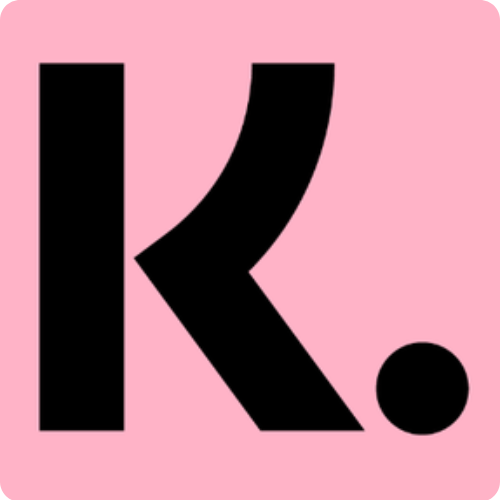Vehicle History | VW Type 2 T2 Bay Window Bus


Following on from VW’s first incarnation of a commercial vehicle, the Bay Window Bus was introduced in late 1967. Quite different to its predecessor, many felt that it had lost some of the character of the previous model. However, many refinements were added and its top speed was increased to 80 mph.
This second-generation Type 2 lost its distinctive split front windshield, and was designed to be a easier to produce using the advances in mechanised production, and was slightly larger and considerably heavier than its predecessor. Commonly known as the Bay-window, or Bread Loaf in other countries.
The 36bhp engine was also slightly larger, having grown to 1600cc, but was a still a single port design at this time. The new bus had done away with the swing axle rear suspension of the Split and Beetle and reduction boxes previously used to raise ride height, and act as an extra gearbox. Instead, half-shaft axles fitted with constant velocity joints raised ride height without the wild changes in camber of the Beetle-based swing axle suspension. The updated Bus transaxle is usually sought after by off-road racers using air-cooled Volkswagen components, as well as being commonly used by Split bus owners when converting their bus to “straight-axles”.
The Bay was modernised by various small changes over a three year period, all eventually leading to the fitment of the later type 4 engine.
In 1971 VW introduced a new engine, whilst still a 1600cc now featured dual intake ports on each cylinder head, power was increased to 50bhp, this upgrade coincided with the addition of new road wheels, behind which were disc brakes for the first time on a Type 2.
1972 saw VW fit the Type 4 engine in the Bay, the Type 4 was so called as it had originally been designed for the 411 and latterly the 412, VW’s attempt at an air-cooled family saloon or estate in the late 60’s and early 70’s.
Whilst still an air-cooled flat 4; it was substantially different to the previous engine. It was still possible to be able to buy a T1 twin-port powered Bay in the UK up until introduction of the T25, US and Canadian market models were all fitted with the 1700cc T4. In 1973 for the first time on a VW commercial vehicle, the option of an automatic gearbox was offered. Power figures were 65bhp for the manual gearbox and 61bhp for the automatic. In 1974, the T4 grew in capacity from 1700cc to 1800cc (67bhp), then once again in 1976 to 2000cc (69bhp).
The T4 engine was to be used in quite a few other vehicles as well, including the Porsche 914, and the Porsche 912E models, as well as being used in the Bay’s successor, the T25, and being the basis for the waterboxer as featured in T25.
Along with the aforementioned engine changes the Bay window also underwent several cosmetic changes throughout its lifetime. As early as February 1968 VW had already started making changes on the Bay, the hazard warning light switch had changed, there was a firewall put in place between the fuel tank and the engine.
In 1969 more changes were to take place, the cab doors were now lockable from inside via a small catch above the door release as opposed to the pins of the previous model. The external door handles were changed from a push-button type to a trigger type. There was also a small number of electrical and detail changes.
The 1970 model year saw more significant changes take place, the dashboard was no longer body coloured, and was now padded for all markets (previously it had been painted in everywhere except the US, who got padded dashes from the factory) and finished in black.
The dashboard top was changed so it was level across its width, not raised at the steering wheel. Window winder handles and door release handles were now black plastic on all models except the Deluxe. Us market models had the side markers changed from round to square.
1971 saw the introduction of the twinport 1600 as mention above, and also the front disc brakes, necessitating the move from wide 5 (5x205) wheel fitment to 5x112. Exterior wise the rear wheel arches had a larger lip to allow more clearance for the new wheels.
Following the introduction of the Type 4 engine, the body of the bay was to undergo more changes, the engine cooling vents on the rear pillars grew in size to provide extra cooling for the new larger engines, the engine lid was changed featuring a squarer number plate aperture, and a new locking mechanism and handle.
The fuel filler opening and door was changed to feature less curves, as well as being moved further towards the rear of the bus, allowing for refuelling with the sliding door open. (Obviously this is not an issue on RHD models)
The formerly removable cross member under the engine lid was now welded in place, and the front wheel arches had gained a lip similar to that of the rear arches. New rear lights replaced the split screen style ones, and were much larger and rectangular, in line with the new US regulations.
They also featured reversing lamps built into the units. Reverse lights had previously been an option on anything apart from US and Canadian spec buses, which received them as standard.

An early & a late model VW Bay Window camper, converted by Westfalia.
Note the squarer bumpers and high front indicators on the late model van.
1973s changes brought more body modifications, the front indicators were moved from just above the bumper, to next to the fresh air grille for the cab, a deformation panel was added behind the front bumper, allowing the bus to pass the US crash tests, even though as a van it was not required to pass them.
The VW roundel on the front panel shrunk in size, and was made of plastic, painted white (L041)on most models, and chromed plastic on Deluxes. The “blade” type bumpers of the earlier buses had been replaced by the larger and squarer “Europa” type bumpers. By virtue of the bumpers changing, the cab steps were now incorporated into the wheel-arch/wing. All Type 1 engined buses now used an alternator as opposed to a generator.
In 1974 VW refined the bus further, the Type 4 engine had been increased to 1800cc, the cab floor was redesigned, and the fuel filler was now flush mounted into the side of the van, rather than hidden behind a door as on previous versions. The painted finish on the dashboard was changed from a smooth finish to a rough finish.
The sliding door handle was changed and now featured the lock in the door, as opposed to the handle. It was now possible to lock the door from the inside, but unlock if from outside, a system put in place by linking both internal and external locking mechanisms. For ease of access to the engine, VW introduced an inspection cover above the engine, in the form of a lifting luggage compartment floor.
1975 and 1976 saw relatively little in the way of changes for the bus, with only minor changes occurring, the previous stainless steel mirrors had been replaced by painted steel items on all but the Deluxe models. The Type 4 engined bus had a capacity increase from 1800-2000cc, the Type was also now available in pick-up form.
In the last three years of production, the Bay saw little in the way of updates, VW were busy working on the T25 (the Bay’s successor) externally the engine lid hinges were changed to a more simple design, internally, mechanically and electrically the bus was largely unchanged.
M524
M-Numbers are VW’s way of distinguishing optional equipment, for instance M020 was a speedometer in MPH, and M032 was a lockable fuel cap.
M524 was a variable option, but basically covered all the options that would have been standard fit on US and Canadian spec vans.
It included, padded dashboards, side markers, all-red taillights, twin filament bulbs in turn signals, ignition key warning buzzer, dual circuit brake warning lamp, illuminated heater controls, chrome trim on all Microbuses, and sealed beam headlamps.
US spec pickups had two oval shaped slots in the tailgate allowing the rear lights to show through even when the tailgate was dropped.
Body Configurations
Type 21 Panel Van
The panel van consisted of two single seats in the cab, with a walkthrough to the cargo compartment. The headliner was only fitted in the cab area, the cargo area was very spartan, with no side panels, heating or windows. The spare wheel is stowed in the engine compartment.

An early model VW Bay Window panel van
Type 22 Microbus
Fitted with softer rear torsion bars for a bit more passenger comfort, and chrome hubcaps. The cab is much the same as a panel van, but the headliner extends full length, the glovebox has a lid. The passenger compartment is fitted with two three seater bench seats, interior panels with upholstery.
Type 23 Kombi
Effectively a combination (hence the name) of a panel van, and a microbus, headliner in cab area only, 1 vent window in the sliding door, 1 in the opposite side panel. One heater outlet into the cargo area. Stronger torsion bars, except for ’68 models, and models fitted with rear seats from the factory.
Type 24 Micro Bus L
Essentially the same as Type 22, but with added M-codes (optional extras). The deluxe bus had the following options over the standard microbus; steel sliding sun roof (until 1974), dash mounted clock, vent windows in the doors, bump strips on the bumpers, jailbars on rear and side windows, a chrome set (including badges, window trims and a belt-line trim) and trim rings on the windows. Not all these extra’s appeared on all model years, but is more an overview of the extras fitted to the Deluxe through the years. In 1974, the Type 24 moniker was dropped, and the Deluxe became and M-coded variant of the Type 22.
Type 26 Pick-Up
Single Cab – One cargo door under the pick up bed, metal dropsides, spare tyre stored under the bench seat. The cab featured a single seat for the driver, then a 2 seater bench seat.
Twin Cab – Same configuration for the front of the cab, then a 3 seater bench in the rear section of the cab, spare tyre stored under the bench seat, single door to rear compartment on passenger side. Fibreboard side panels, and one heater outlet to rear of cab.

A late model VW Bay Window crew cab
Not dissimilar in base specification to a Type 22, but with the addition of a bulkhead between the cab and the passenger area, with a sliding window, the spare tyre was located under the bench seat in the cabin.
Rear torsion bars were as on a type 22, chrome hubcaps were fitted, a searchlight was fitted to the inside of the windscreen, reverse lamps were standard on all ambulances. On the inside of the rear compartment, the headlining was extended to meet the top of the trim panels, which were ivory in colour.
A roof ventilator was fitted, and an adjustable heater nozzle was fitted. The windows are all fitted with blinds or frosted from halfway down.
Foreign Built Bays CKD Bays – Completely Knocked Down Kits Following on from the success of the Beetle, VW had the perfect opportunity to launch the Bay window into developing markets, however a lot of these countries had laws in place making the import of luxury items, such as cars and vans prohibitively expensive.
VW had an answer for this in the form of CKD vehicles. Basically this consisted of a giant Airfix kit, the vehicles being supplied in kit form, grouped into various modular parts, ready for easy assembly upon arrival. The vehicles were all packed in easily transportable packing cases. CKD vehicles were only available as basic models, such as Kombi’s, Pick-ups and Panel Vans, the luxury transporters were deemed to complex to assemble.
The kits were assembled at specially commissioned plants in the following countries; Indonesia, Thailand, Philipines, Malaysia, Pakistan, Peru, Sri Lanka, Finland, Senegal, Turkey, Egypt, Ecuador, Mexico, Ghana and Kenya. Production of Type 2’s in Brazil had commenced on the 2nd of September 1957, at VW do Brazil’s plant in Sao Bernardo do Campo, just outside Sao Paulo. CKD Splitscreen kits had been produced in the factory since 1953. Around half the parts necessary for production had been being made locally or by VWB anyway, so it was a small step to move total production over. Brazilian built buses were not only sold in the home market, but also South and Central America as well. Split window buses were produced in Brazil up until 1975, when VWB began production of the bus using T1 and T2 parts.
Whilst from the front the buses looked nigh on identical to their German cousins, the bus from the B pillars back bore more resemblance to the Split, with the Kombi having a 15 window split type rear end with narrow tailgate, and corner windows, along with late spec Bay rear lights, a right mixed bag. The trend was continued for the panel van, featuring double opening cargo doors, rather than the sliding door we’d become accustomed to on the European Bay.
Production of these hybrid buses continued up until 1997, in the form of Panels, Kombi’s, Single and Double Cab pickups. In 1981 VWB introduced a new 1600cc diesel for the bays, based on a Mk1 Golf Diesel engine, offered only on the panels, single cabs and the newly introduced double cab pickup.
In 1983 the Brazilian buses were brought up to c.1973 European model specification with the addition of disc brakes and seat belts. 1985 saw the diesel and double cab models axed and in 2000 the pickup was removed from the lineup. In 1997 VWB announced the new Kombi, now recognizable as a European spec Bay. Save for a slightly raised roofline, a new steering wheel and some other detail changes.
Two engine options were available on the new bus, 1 fuelled by Methanol, the other being the venerable Type 1 1600cc mill. These revised Type 2’s were available in 5 different configurations; School Bus, Panel Van, Kombi Minibus, Kombi and an ambulance version. The Kombi can only be ordered in white, but once every two months, one day’s worth of production is finished in Silver.
.Taking the lions share of the light commercial market (around 40%) the Kombi has proved massively successful in Brazil, a lot of this is probably due to the vehicles fantastic value, at around 6500 Euros for a new one. December 23rd 2005 saw the end of aircooled Kombi production in Brazil, with a new “Total-Flex” engine being produced, based on a VW Polo 1400cc watercooled inline 4 cylinder unit, producing around 79bhp on pump petrol, and around 80bhp when run on ethanol (easily available in Brazil as a product of refined sugarcane), the necessitated the vehicle to have two fuel tanks (one on each side).

A watercooled VW Brazil Kombi. Note the radiator grille on the front panel and swage line doors
Currently these water-cooled Kombi’s are still available in Brazil. Mexican Bays VW de Mexico produced their first Type 2s for the home market on October 1st 1971, in Puebla, one of VW’s largest overseas manufacturing plants. VW had been manufacturing the Beetle in Puebla up to 2003. From initial production the bay had been available in Kombi (called Combi in Mexico) and Panel van (Panel) in Mexico.
During a 25 year production period VW Mexico produced 250,000 Type 2’s. The Mexican Bay went through a similar development process to that of the Brazilian equivalent, with a water-cooled motor being offered in 1987, and the roofline changing to the more elevated design in 1991. In 1996 production of Bays in Mexico ceased, and until VW decided to discontinue the Type 2 in Mexico after 30 years in 2001 all remaining buses were imported from Brazil.




 Escarabajo
Escarabajo
 T1 Split
T1 Split
 T2 Bay
T2 Bay
 T3
T3
 T4
T4
 T5
T5
 Golf Mk1
Golf Mk1
 Golf Mk2
Golf Mk2


 911
911
 996
996
 997
997
 986 Boxster
986 Boxster
 987 Boxster
987 Boxster
 912
912
 944
944
 924
924





